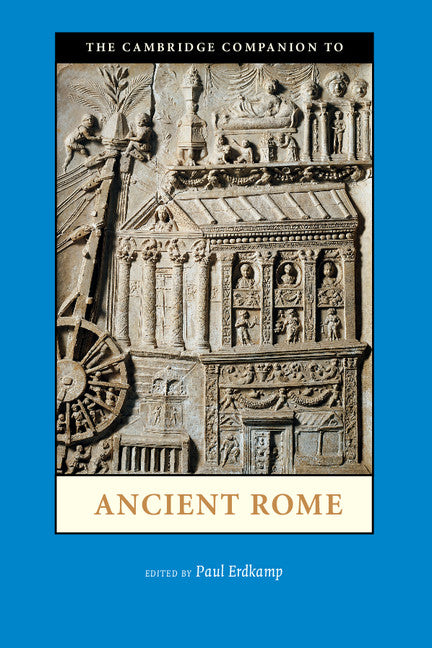Freshly Printed - allow 8 days lead
Couldn't load pickup availability
The Cambridge Companion to Ancient Rome
A highly accessible survey of life in the capital of the Roman Empire, the largest metropolis of its day.
Paul Erdkamp (Edited by)
9780521720786, Cambridge University Press
Paperback, published 29 August 2013
646 pages, 39 b/w illus. 10 maps
22.8 x 15.2 x 2.9 cm, 1 kg
Rome was the largest city in the ancient world. As the capital of the Roman Empire, it was clearly an exceptional city in terms of size, diversity and complexity. While the Colosseum, imperial palaces and Pantheon are among its most famous features, this volume explores Rome primarily as a city in which many thousands of men and women were born, lived and died. The thirty-one chapters by leading historians, classicists and archaeologists discuss issues ranging from the monuments and the games to the food and water supply, from policing and riots to domestic housing, from death and disease to pagan cults and the impact of Christianity. Richly illustrated, the volume introduces groundbreaking new research against the background of current debates and is designed as a readable survey accessible in particular to undergraduates and non-specialists.
Introduction Paul Erdkamp
1. The emergence of the city Alexandre Grandazzi
Part I. Inhabitants: 2. Population size and social structure Neville Morley
3. Disease and death Walter Scheidel
4. Slaves and freedmen Elisabeth Herrmann-Otto
5. Immigration and cosmopolitanization Claudia Moatti
6. Marriages, families, households Beryl Rawson
7. Pack-animals, pets, pests, and other non-human beings Michael MacKinnon
Part II. The Urban Fabric: 8. The urban topography of Rome Elisha Dumser
9. Housing and domestic architecture Glenn R. Storey
10. Regions and neighborhoods J. Bert Lott
11. Monumental Rome Roy D. Miller
12. (Sub)urban surroundings Robert Witcher
Part III. Logistical Challenges: 13. The Tiber and river transport Steven L. Tuck
14. Traffic and land transportation in and near Rome Ray Laurence
15. The food supply of the capital Paul Erdkamp
16. Counting bricks and stacking wood: providing the physical fabric Shawn Graham
17. Water supply, drainage and watermills Christer Bruun
Part IV. Working for a Living: 18. Industries and services Wim Broekaert and Arjan Zuiderhoek
19. Labour and employment Cameron Hawkins
20. Professional associations Jinyu Liu
21. Sex and the city Thomas A. J. McGinn
Part V. Rulers and the Ruled: 22. Civic rituals and political spaces in Republican and Imperial Rome Adam Ziolkowski
23. Policing and security Benjamin Kelly
24. Riots Gregory S. Aldrete
25. 'Romans, play on!': city of the games Nicholas Purcell
Part VI. Beyond This World: 26. The urban sacred landscape Andreas Bendlin
27. Structuring time: festivals, holidays and the calendar Michele R. Salzman
28. Cemeteries and catacombs Leonard V. Rutgers
29. What difference did Christianity make? A. D. Lee
Epilogue: 30. The city in ruin: text, image, and imagination Catharine Edwards
31. Roma aeterna Ingrid Rowland.
Subject Areas: Classical Greek & Roman archaeology [HDDK], Social & cultural history [HBTB], Early history: c 500 to c 1450/1500 [HBLC], Ancient history: to c 500 CE [HBLA]


